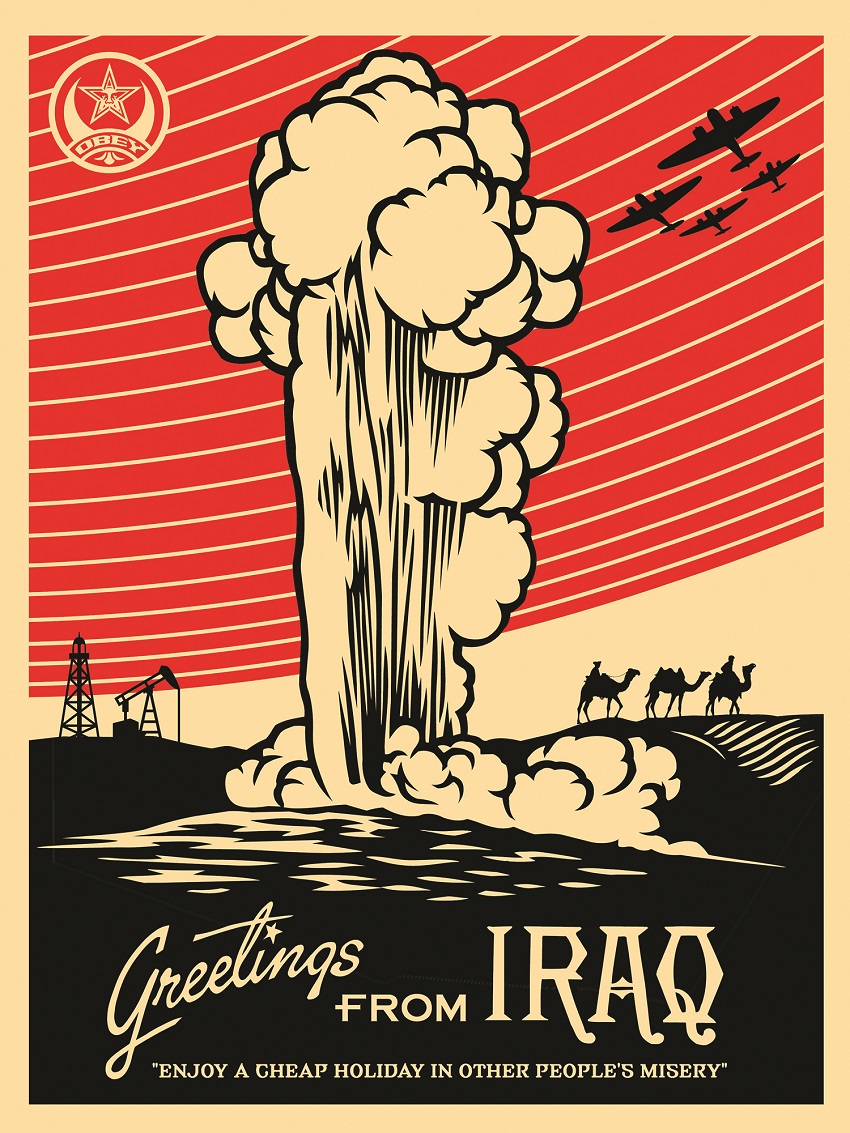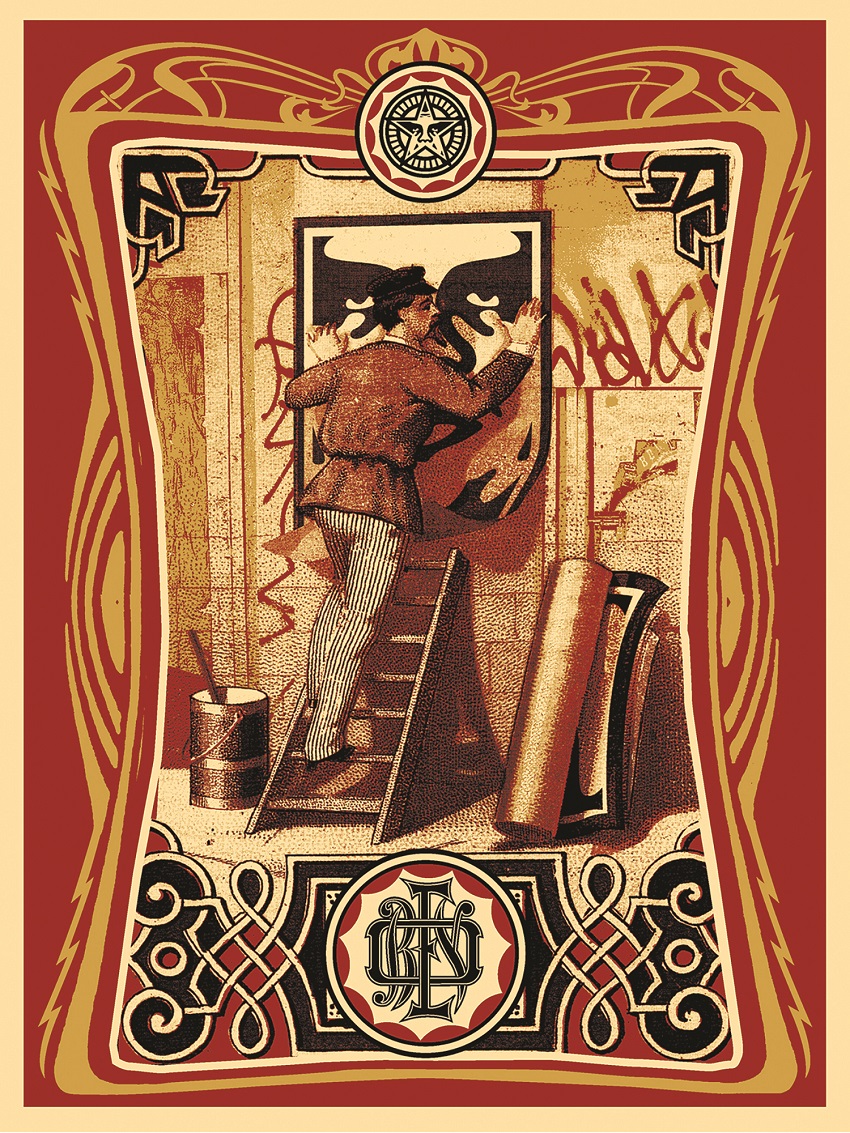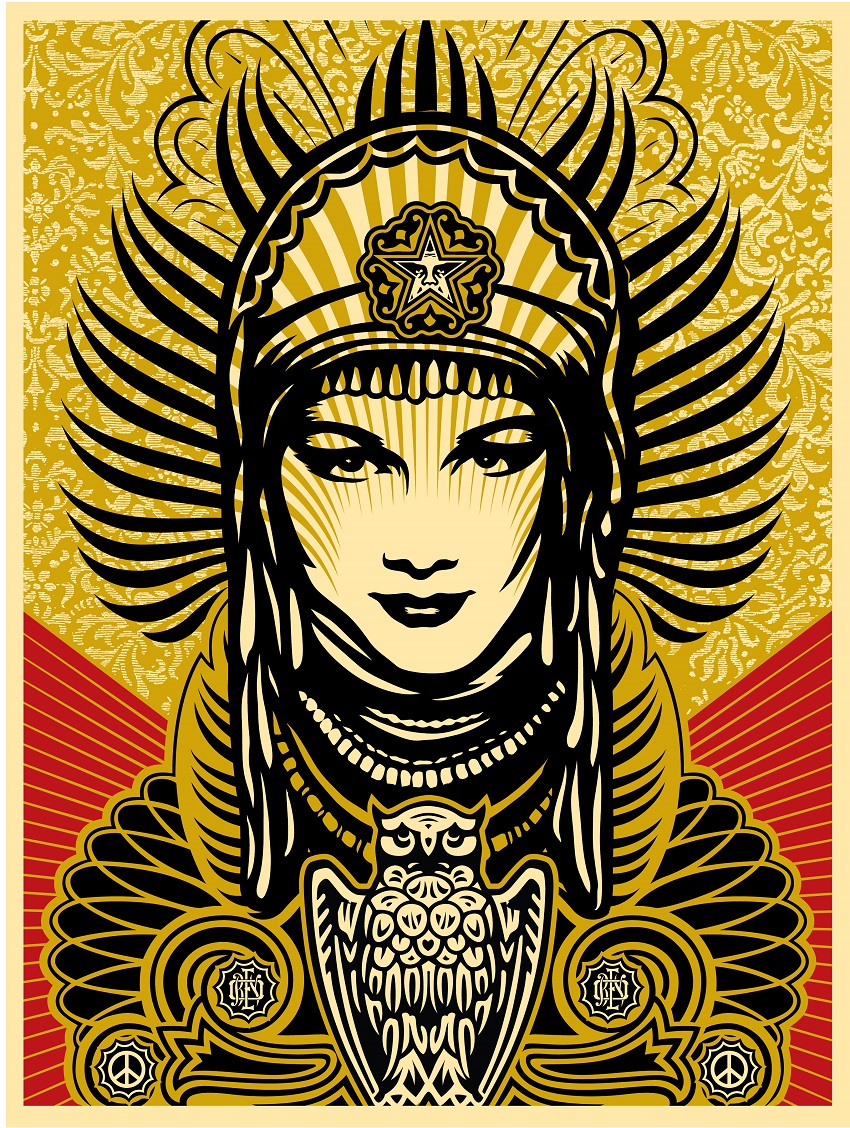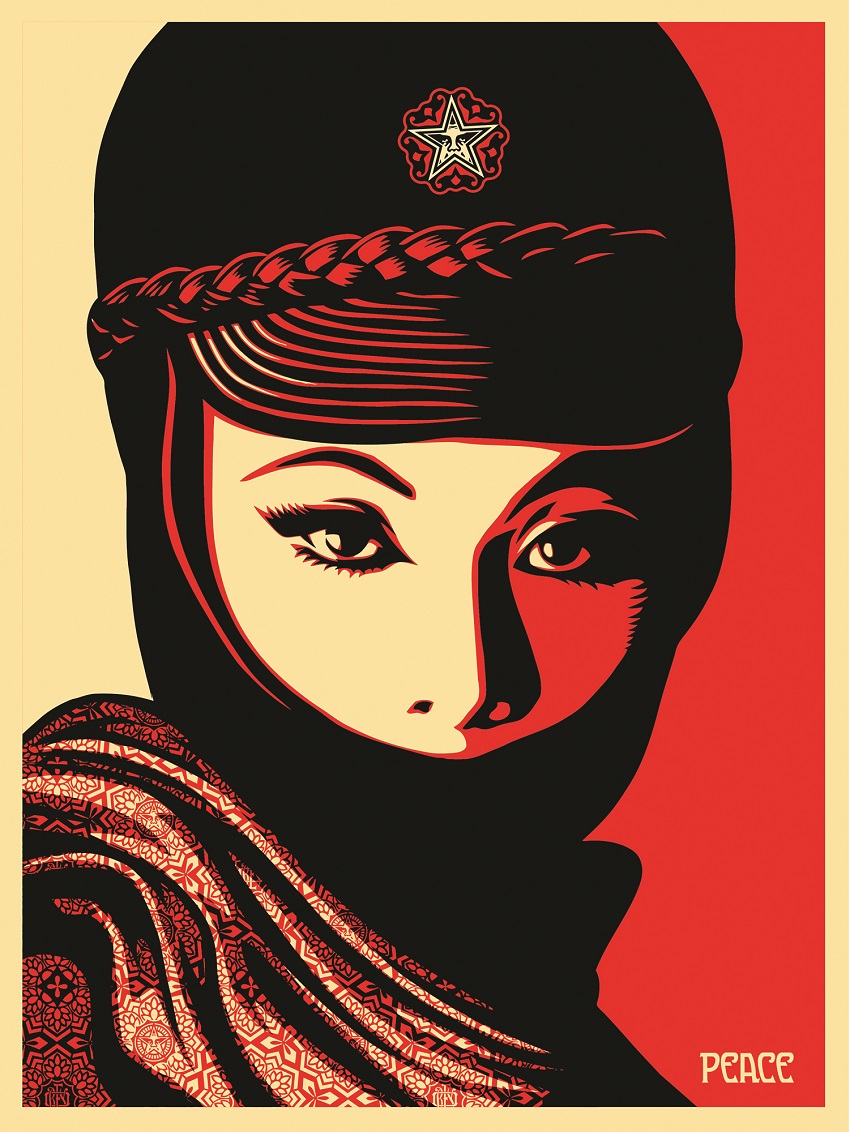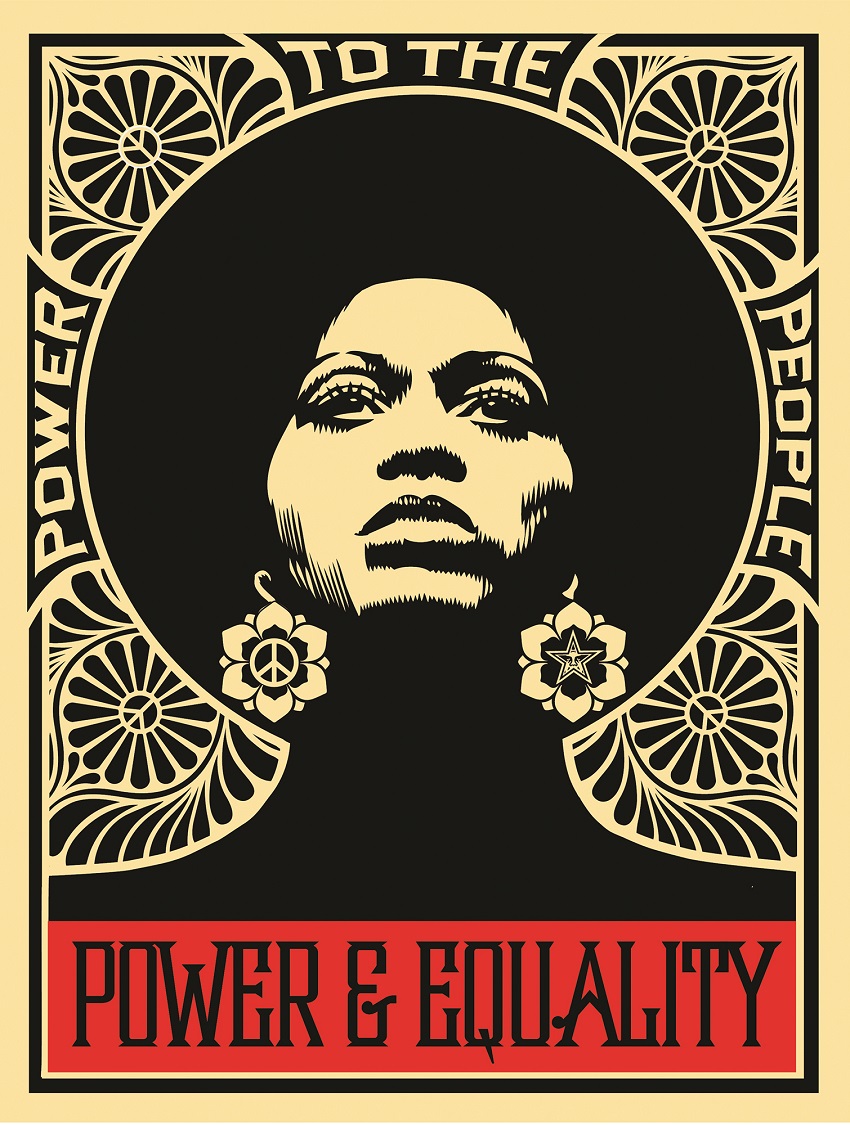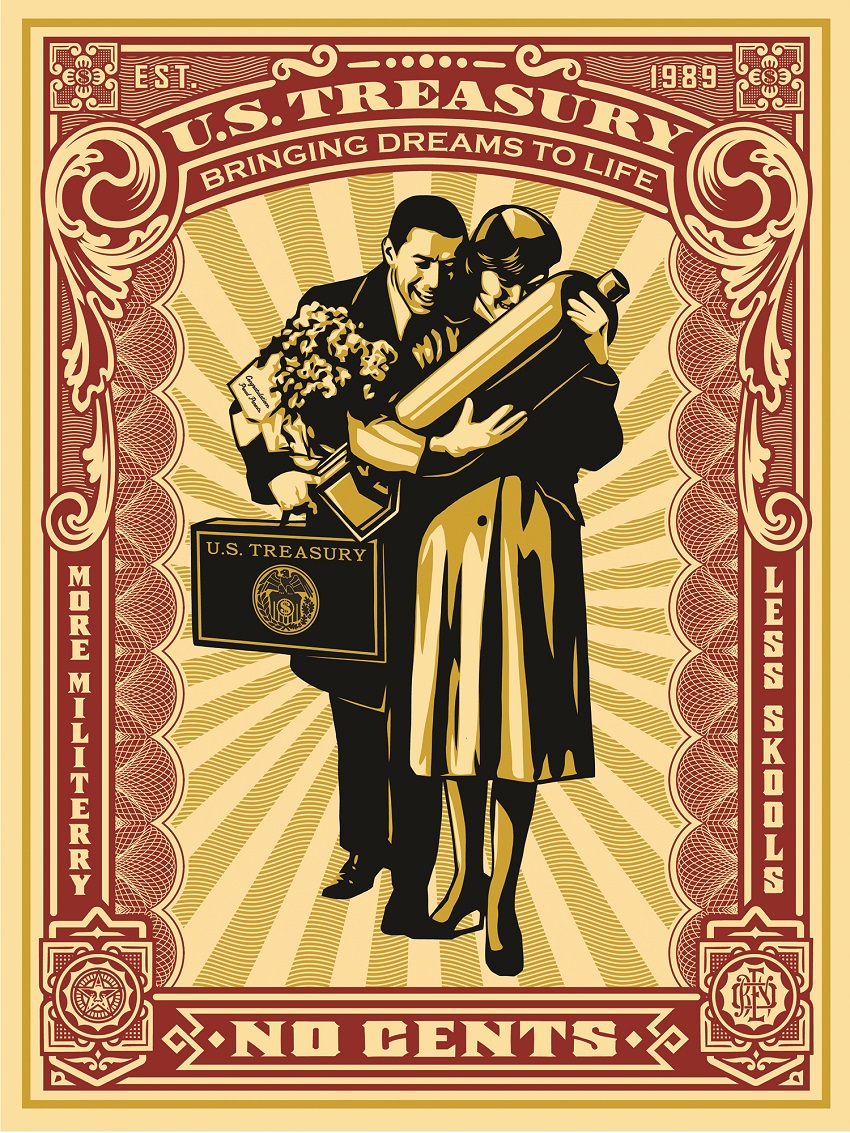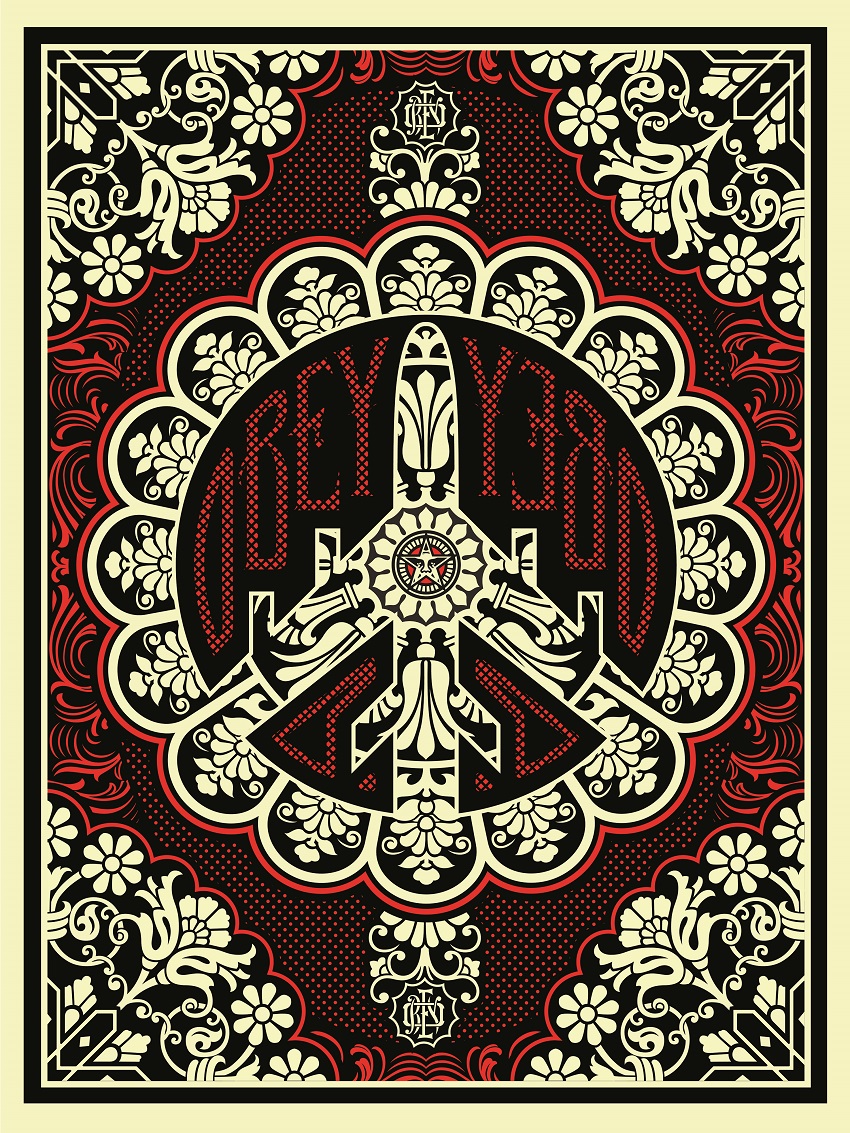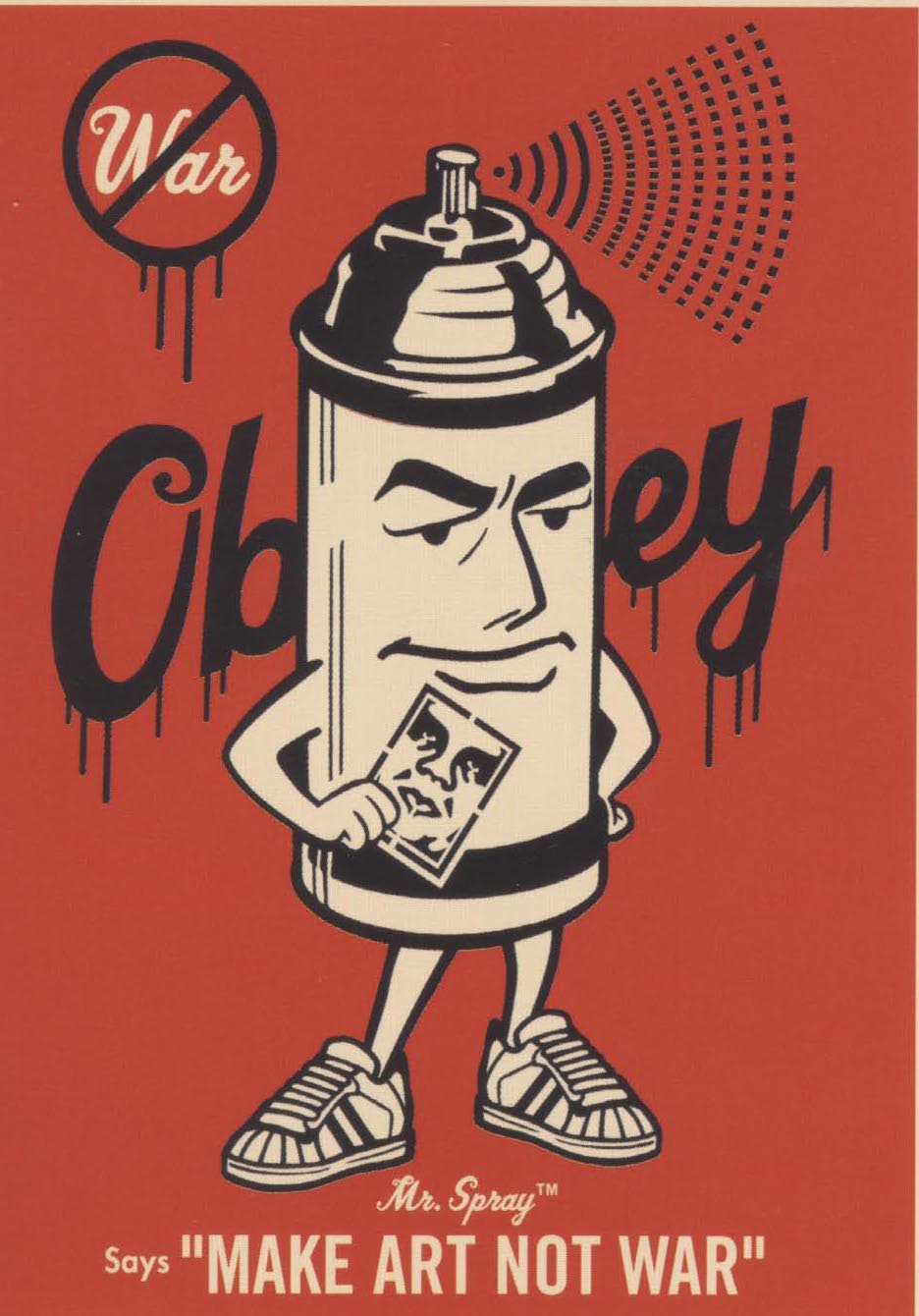
Shepard Fairey, Mr. Spray, 2004. Screenprint. 24 x 18 inches (61 x 45.7 cm). Institute of Contemporary Art/Boston. Acquired through the generosity of Beth and Anthony Terrana, Sandra and Gerald S. Fineberg, Fotene Demoulas, and the artist. Courtesy the artist and Obey Giant Art © Shepard Fairey
